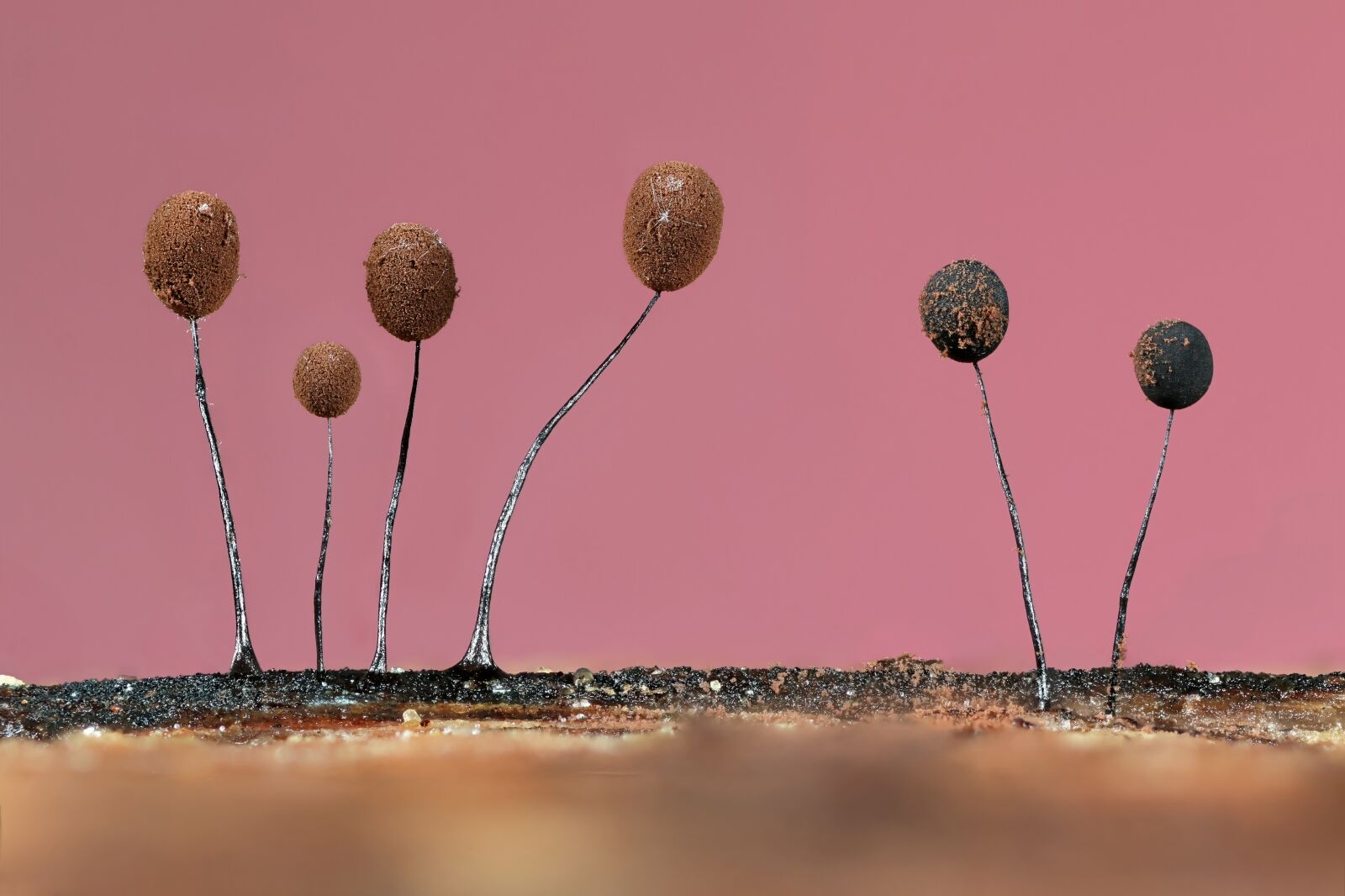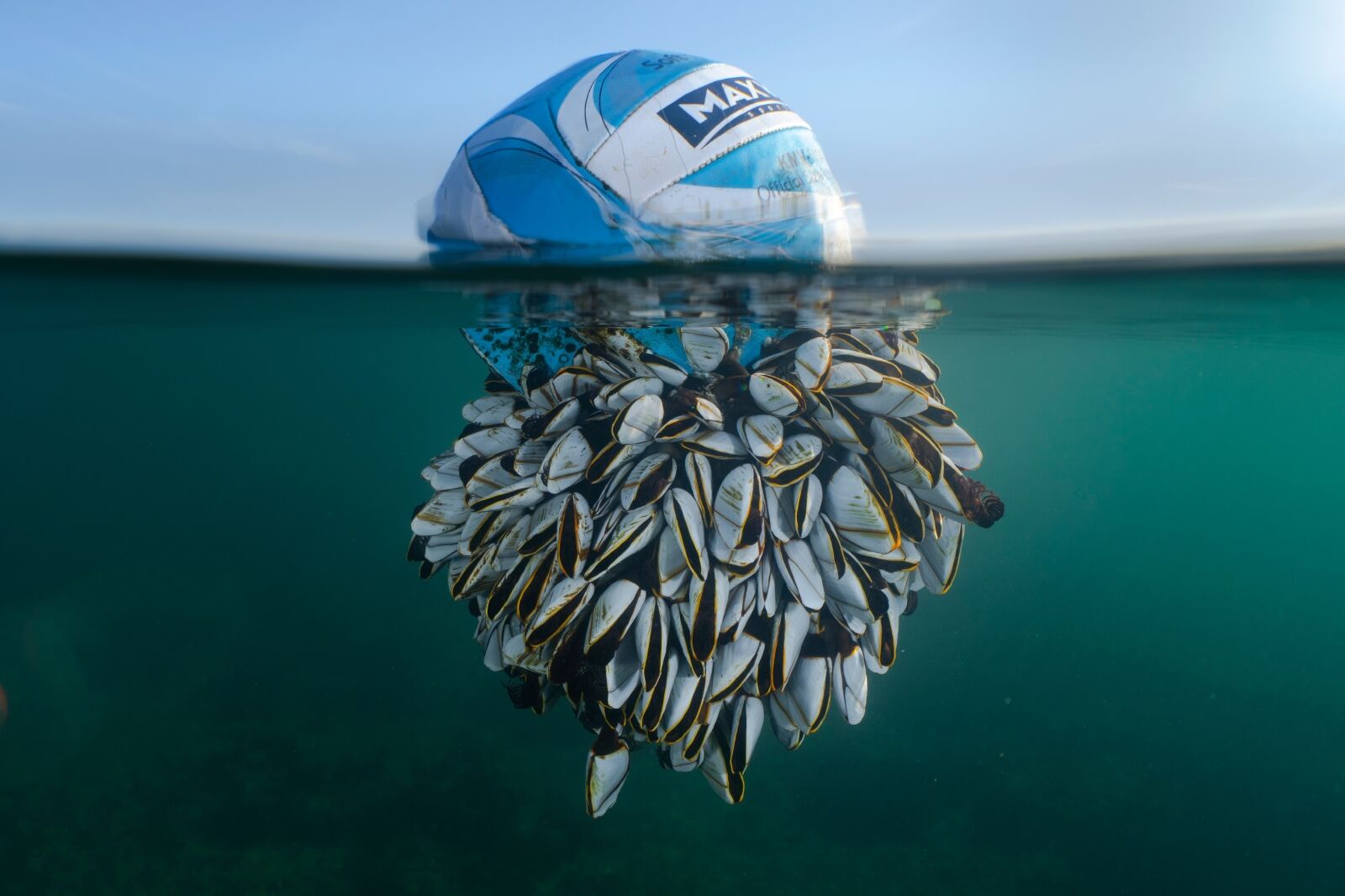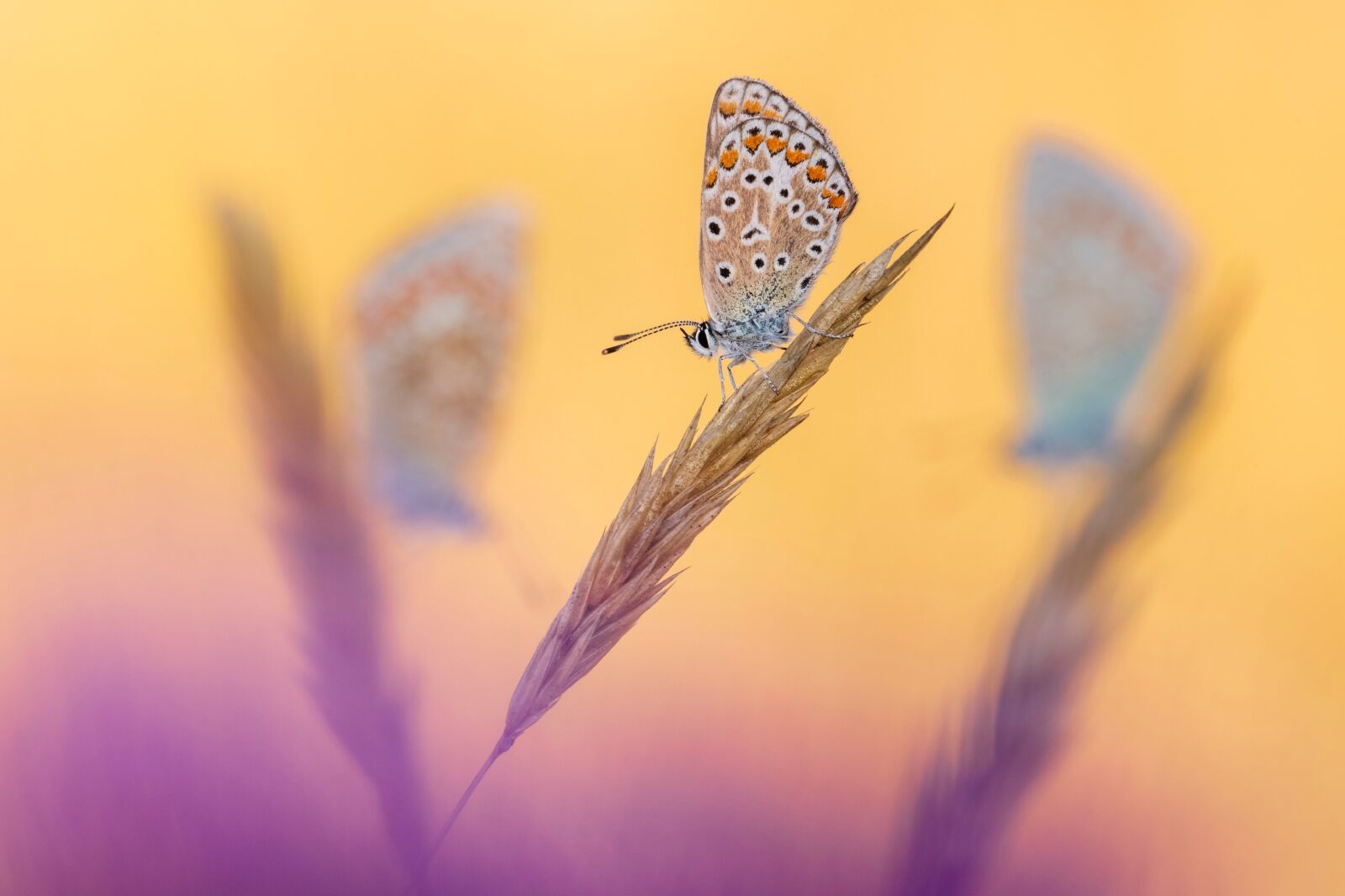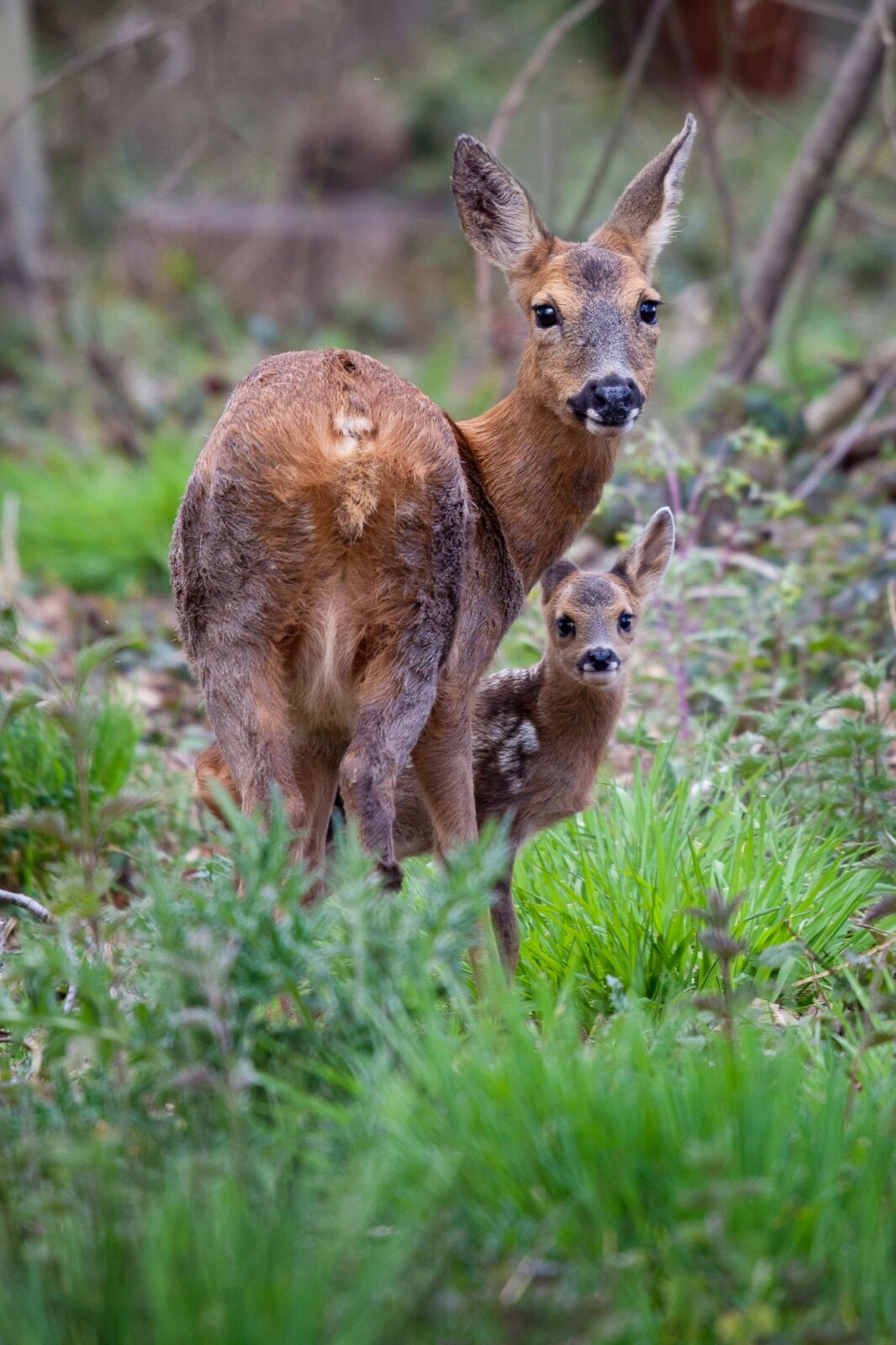It may not be big and flashy, but there’s something hauntingly beautiful about wildlife in the UK. Nature thrives in urban areas and the countryside alike, and with the stark changes of seasons, locals and visitors to the UK are treated to an abundance of different species and a range of interesting behaviors. Every year, the British Wildlife Photography Awards invites amateur and professional photographers to submit their favorite photographs of wildlife across the nation. With a grand prize of over $6,300, this year the competition saw more than 14,000 submissions. The top prize went to Ryan Stalker, who captured a football floating in the water covered in invasive goose barnacles. The RSPB Young British Wildlife Photographer of the Year went to Max Wood for his sunrise image of a coot running across a lake in England. But there’s a lot more to enjoy. Here are the winners across all categories, and I think you’ll agree they all capture the magnificent nature of wildlife in the British Isles.


Photo: British Wildlife Photography Awards/Ryan Stalker
Beautiful and Resilient: The Best of the British Wildlife Photography Awards 2024
Animal Behaviour

Common frog (Rana temporaria) — Perthshire, Scotland
Photo: British Wildlife Photography Awards/Ian Mason
Ian Mason won the category Animal Behaviour with his charming photo of three frogs in his garden pond in Perthshire, Scotland. “Every March, our garden ponds suddenly come alive with hundreds of frogs that seem to appear overnight from nowhere,” says Mason. March and April are months that see an end to the hibernation of many species in the UK. As the temperature begins to rise, frogs come out on mass from hibernation quarters to breeding ponds. Mason took this image with a lens at water level, and although the frogs are extremely active during this period, Mason says, “sometimes they freeze long enough to get a shot.”
Animal Portraits

Common starling (Sturnus vulgaris) — Garden, Solihull, West Midlands, England
Photo: British Wildlife Photography Awards/Mark Williams
Mark Williams’ stunning photo of a starling at night won him best in Animal Portraits. Williams had been observing the birds in his garden feeder. Starlings are found across the UK, except for the Highlands of Scotland. They are well known for their winter behavior, where they come together in huge flocks that form dancing murmurations. And indeed, they move fast. Williams had his work cut out for him to capture this beautiful image and the fine details of the bird. “To achieve this, I used flash in rear curtain sync mode,” says Williams. “Timing was crucial, and I needed to carefully balance the flash with the ambient light to record the starling’s trail at the beginning of the exposure, while a brief burst of flash would freeze the bird in mid-flight,” he continues.
Black and White
Shooting from Goatfell on the Isle of Arran, Robin Dodd captured a raven as it soared over the mountains of the West Coast of Scotland. Goatfell is popular with hillwalkers and climbers. The summit offers rewarding panoramic views over Arran, the Atlantic, and on a cloudless day, you can even see as far as Ireland. The Scottish summer is your best chance for a clear day, and that’s exactly what Dodd had. “It was a lovely hike to the top on a bright summer afternoon,” he continues “When we reached the summit, it was deserted except for two ravens who seemed to dominate the peak.” Ravens are hugely territorial, and these territories (and food sources) are usually defended aggressively.
Botanical Britain

Slime mould (Comatricha nigra) — Essex, England
Photo: British Wildlife Photography Awards/Jason McCombe
“The world of slime molds is fascinating,” says the winner of the Botanical Britain category, Jason McCombe. “They’re neither plants nor fungi,” McCombe continues. When McCombe set out to find some to photograph, he noted that they were everywhere. There are some 900 known species of slime mold worldwide, and there are likely to be hundreds more unknown species. They vary greatly in their color, size, and form. Slime molds typically occur in cool, moist, shady places like crevices within decaying wood, beneath the partially decayed bark of logs and stumps, and in leaf litter on the forest floor. However, some are found on live plants, typically on the lower stems, as well as on garden lawns. McCombe’s winning photograph was made using over 100 images, “each focused on a different area of the scene, then stacked together to create one highly detailed image,” says McCombe.
Coast and Marine

Goose barnacles (Thoracica) — Portland, Dorset, England
Photo: British Wildlife Photography Awards/Ryan Stalker
The photograph titled “Ocean Drifter” won the British Wildlife Photographer of the Year 2024 and the Coast and Marine category. The photo shows a football that is covered with goose barnacles below the waterline. The award-winning image was taken by Ryan Stalker at the southernmost point of Dorset, Portland. “The football was washed up in Dorset after making a huge ocean journey across the Atlantic,” says Stalker. And indeed, goose barnacles are not native to the UK. They are frequently spotted on the coastal areas of Europe, North America, and South America but often wash up on British beaches during powerful storms, Stalker shares. He continues that it is a concern that human waste is bringing new species to the shores of the UK as these may well be invasive and pose a risk to the balance of nature on the island.
Habitat

Red fox (Vulpes vulpes), Sherwood Pines Forest Park — Nottinghamshire, England
Photo: British Wildlife Photography Awards/Daniel Valverde Fernandez
Titled “The Tightrope Walker,” Daniel Valverde Fernandez’s photo takes top place in the Habitat category. Taken in Sherwood Pines Forest Park — the largest public woodland in the East Midlands, England, spanning over 3,300 acres — the photo captures a red fox walking along a tree branch. It balances at “a considerable height from the ground,” says Valverde Fernandez. Foxes have slender, flexible bodies with a long tail and strong core that helps them counterbalance. The red fox can climb trees and fences with agility. They also help keep the forest in perfect balance. Foresters and park rangers consider the presence of foxes to be a good indicator of the health of the forest ecosystem as they are natural predators and help to control populations of rodents and other small animals.
Hidden Britain

Common blue butterflies (Polyommatus icarus) — Vealand Farm, Devon, England
Photo: British Wildlife Photography Awards/Ross Hoddinott
Ross Hoddinott’s submission to the Hidden Britain division showcases the common blue butterfly. Snapped on Vealand Farm in Devon, England, Hoddinoot shares he has a “slight addiction to photographing blue butterflies,” he continues “I just love them.” Common blue butterflies play a vital role in the meadow’s ecosystem. They are pollinators. Flitting from flower to flower, feeding on nectar, they inadvertently pick up pollen on their bodies. This helps to ensure the continued growth of the wildflowers that provide the nectar the butterflies need, creating a mutually beneficial cycle. “I found a dozen or so blues all resting close together one evening last summer,” shares Hoddinott, “The warm, evening light produced a vibrant natural background.”
Urban Wildlife

Red fox (Vulpes vulpes) — Bristol, England
Photo: British Wildlife Photography Awards/Simon Withyman
Foxes are not only found in the woodland areas of the UK, it’s very common to see them at night in urban areas. The city of Bristol has one of the highest concentrations of urban foxes in Britain, with estimates suggesting there are around 40 foxes per square mile living in the city. This is likely due to the abundance of food and shelter that urban environments provide for foxes. Foxes are adaptable creatures and have learned to thrive in close proximity to humans. They are most active at night, but they can sometimes be seen during the day, especially if they are looking for food. “This vixen had taken up residence in an electricity substation after being pushed out of her parental territory,” says winning photographer Simon Withyman. “The fenced-off area provided her with a quiet place to rest away from the busy city,” Withyman continues.
Wild Woods

Beech (Fagus sylvatica) — East Lothian, Scotland
Photo: British Wildlife Photography Awards/Graham Niven
Graham Niven’s photograph titled “Beech for the Sky” was taken in a beech grove near Dunbar in East Lothian, Scotland. Beech groves thrive in cool, moist climates with fertile soil like those found in the UK. The dense canopy they create shades the ground, suppressing the growth of other trees and shrubs. This creates an ecosystem with its own characteristic. Niven has captured a phenomenon called the canopy of shyness. The term describes the tendency of mature beech trees to avoid touching each other’s crowns, resulting in a network of channels and gaps in the upper canopy. “Besides the wondrous vision you are afforded,” says Niven, “it’s also just a great excuse to lie down in the forest.”
Youth Category — 15 to 17 Years Old

Coot (Fulica atra) — Frensham Little Pond, Surrey, England
Photo: British Wildlife Photography Awards/Max Wood
The winner of RSPB Young British Wildlife Photographer of the Year 2024 and the 15 – 17 Years category was Max Wood. Wood captured this stunning image of a coot taking flight over Frensham Pond in Surry, England. Wood woke at 4:45 AM with the hope of capturing the birds becoming active in the morning light. His early morning start paid off. “As the morning progressed, rays of sunlight began to shine through trees along the edge of the pond, creating spotlights in the morning mist, says Wood.
Youth Category — 12 to 14 Years Old

Roe deer (Capreolus capreolus) — Sherfield on Loddon, England
Photo: British Wildlife Photography Awards/Felix Walker-Nix
The 12 to 14-year-old category was won by Felix Walker-Nix, who captured this pretty mother and fawn in Sherfield on Loddon, England. You’re most likely to see a fawn roe deer between late May and early June throughout mainland Britain. Roe deer are shy creatures and are most active at dawn and dusk. They are excellent at camouflaging themselves in their natural habitat, so spotting one can be a real treat for nature lovers. Luckily, Walker-Nix spotted this mother grazing the foliage. “Slowly, I crept towards her, careful not to startle her,” says Walker-Nix. “To my delight, when she turned around, I saw a small fawn staring back at me.”
Youth Category — 11 Years Old and Under
This charming shot was captured by the youngest winner of the competition, Jamie Smart. The long-tailed game birds are abundant in the UK countryside. There are wild pheasants, but the majority of birds are bred to shoot. The shooting season in the UK typically runs from October 1 to February 1, so here’s hoping this stunning male pheasant made it. Smart says he and his father woke very early to spot hares the morning this photograph was taken. “As it happens, we didn’t get to see any hares boxing that morning, but Mr. Pheasant making this appearance really made up for it,” says Smart.

